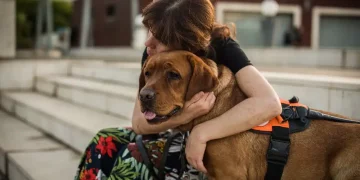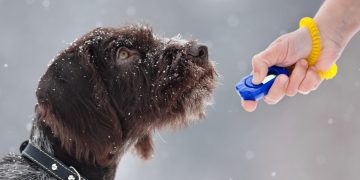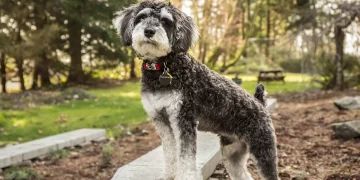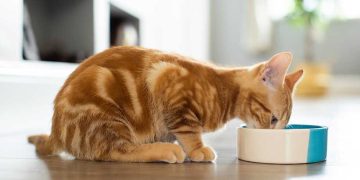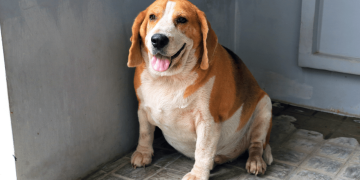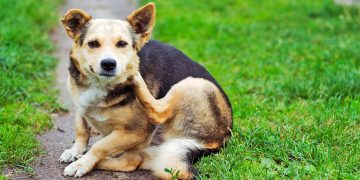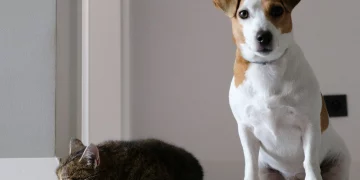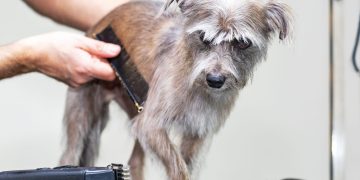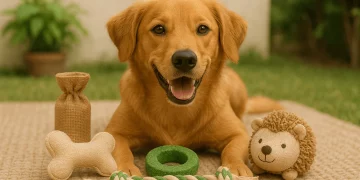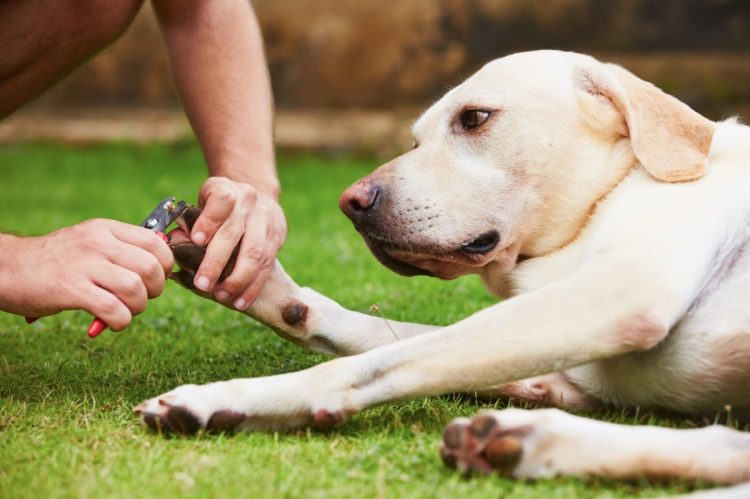Long-haired pets, especially dogs and cats, are often admired for their beautiful, flowing coats. Breeds like the Persian cat, the Shih Tzu, the Yorkshire Terrier, or the Afghan Hound have stunning, long fur that requires extra care and attention. While their gorgeous coats can be one of their most endearing features, they also come with unique grooming challenges. If you have a long-haired pet, you know that grooming is not just about brushing their fur—it’s about maintaining their health, comfort, and appearance. In this article, we will dive into the specific challenges associated with long-haired pets, share the best grooming tools and techniques for detangling and brushing, and offer advice on preventing matting and skin issues to keep your long-haired pet looking and feeling their best.
Specific Challenges with Long-Haired Pets
Long-haired pets are not just beautiful; they often have complex grooming needs that require more time and effort. The challenges of maintaining their coats go beyond simple brushing, as their fur can be prone to tangling, matting, and even skin issues if not properly managed.
1. Tangles and Mats
One of the most common problems with long-haired pets is tangling and matting. Long hair tends to knot easily, especially in areas where friction occurs, like behind the ears, under the legs, or around the neck. Mats can be painful for your pet and, if left untreated, can lead to skin irritation, infections, and hair breakage.
2. Excessive Shedding
Long-haired breeds tend to shed more than short-haired pets, and their shedding is more noticeable. The longer the hair, the more likely it is to get caught in the furniture, carpets, or even your clothing. Without regular brushing, this hair can accumulate and contribute to uncomfortable matting or tangling.
3. Skin Irritation
Long hair can also trap moisture, sweat, and dirt close to the skin. Without proper grooming, this can result in skin issues like rashes, infections, or hot spots. Pets with long coats are also at risk of developing skin conditions such as fungal or bacterial infections if their coats are not cleaned or dried properly after baths.
4. Discomfort
A poorly maintained long coat can cause discomfort for your pet, as mats can pull at the skin and cause tightness. Mats can also cause overheating, as they prevent air from reaching the skin, making it difficult for your pet to regulate its body temperature, especially in warmer months.
Tools and Techniques for Detangling and Brushing
Keeping a long-haired pet’s coat healthy and free from tangles requires the right tools, the right technique, and patience. Here’s a breakdown of the essential tools and techniques for detangling and brushing your long-haired pet.
1. Essential Grooming Tools
- Slicker Brush: This is one of the most effective tools for detangling long fur. The fine, flexible bristles on a slicker brush allow you to remove tangles and mats without pulling too hard on the coat. It’s ideal for pets with dense or thick coats, and it’s great for getting through knots while stimulating the skin for better blood circulation.
- Pin Brush: For pets with long, silky fur, a pin brush can be an excellent choice. It has longer, more spaced-out pins that can gently detangle the fur and remove any loose hair. The pin brush is ideal for preventing breakage while maintaining the coat’s smooth appearance.
- Comb: A comb with both wide and narrow teeth can be helpful for detangling areas that have become knotted. Wide-tooth combs are great for working through larger mats, while narrow-tooth combs are useful for finishing touches or tackling smaller tangles.
- Mat Remover Tool: Special mat removers can help cut through stubborn tangles or mats that have formed. These tools are designed to be gentle on the skin but effective at breaking down even the toughest knots. Be sure to use them carefully to avoid pulling too hard on your pet’s coat.
- Dematting Rake: This tool works by gently breaking up mats without causing discomfort to your pet. It’s great for pets with double coats, like collies or Huskies, as it gets through the dense undercoat to the top layer.
- Grooming Scissors: If mats are too severe and cannot be worked through with brushes, grooming scissors can be used to carefully snip away tangles. Always take extra caution to avoid cutting your pet’s skin.
2. Brushing Techniques
- Start with a Thorough Inspection: Before brushing your pet, take some time to inspect their coat for any tangles or mats. Pay special attention to areas like behind the ears, under the arms, and around the neck, as these are often hotspots for tangling.
- Work in Sections: If your pet has a particularly long coat, divide their fur into sections and brush one part at a time. This approach will make the process more manageable and ensure that every part of their coat is properly groomed.
- Be Gentle: When brushing, always start at the tips of the fur and gradually work your way towards the root. This minimizes the risk of pulling on the fur and causing discomfort. If you encounter a knot, try to gently work it out with your fingers or use a detangling spray before brushing through it.
- Brush Regularly: The more often you brush your pet’s coat, the less likely tangles and mats will form. For long-haired pets, daily brushing is ideal. At a minimum, brushing should be done several times a week, especially during shedding seasons.
- Use Detangling Sprays: Detangling sprays can help make brushing easier, especially for pets with fine or silky coats. These sprays help to soften the fur and prevent further tangling.
- Be Patient: Detangling mats can take time, especially if they are close to the skin. Work slowly and use the appropriate tools to avoid causing discomfort or hurting your pet. If you feel the tangles are too tough to handle, seek help from a professional groomer.
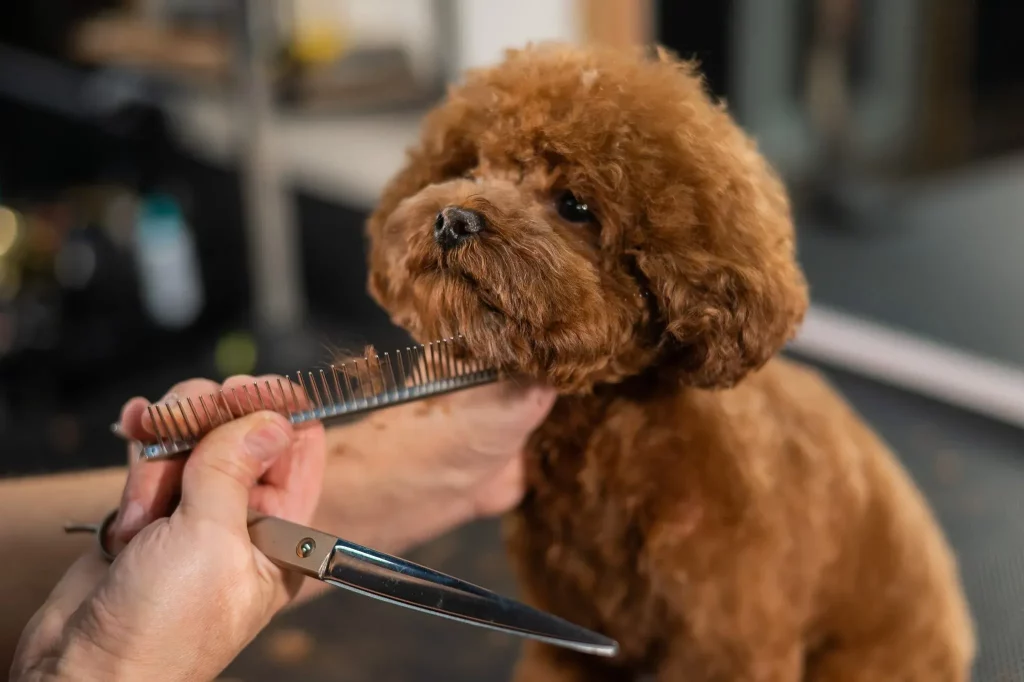
Preventing Matting and Skin Issues in Long-Haired Breeds
Matting and skin issues are some of the most common concerns for long-haired pets, but with a little preventative care, you can keep your pet’s coat in top condition and avoid discomfort or health problems.
1. Frequent Brushing
As mentioned, brushing your pet regularly is the best way to prevent mats from forming. By regularly brushing out tangles and loose hair, you reduce the risk of them becoming matted. The more frequently you brush, the more manageable your pet’s coat will be.
2. Bathing and Drying Properly
Bathing long-haired pets is crucial for maintaining a healthy coat and skin. However, long-haired pets should be bathed carefully to avoid tangling their fur. Use a mild, pet-safe shampoo and conditioner, and make sure to rinse thoroughly to avoid any residue build-up that can irritate the skin.
After the bath, towel-dry your pet gently to remove excess moisture, then use a blow dryer on a low, cool setting to dry the coat. A wet coat is more prone to tangling, so ensuring that it’s properly dried is key to preventing matting.
3. Use Leave-In Conditioners or Coat Sprays
Leave-in conditioners or coat sprays can help keep your pet’s fur soft and prevent mats from forming. These products help to detangle and soften the hair, making brushing easier and more effective. Additionally, they help maintain a shiny, smooth coat while preventing static and flyaways.
4. Trim the Hair in High-Risk Areas
Certain areas of your pet’s body, like the underarms, around the collar, or the area under the legs, are prone to matting. You can prevent mats in these areas by trimming the hair slightly, particularly in spots where tangles are more likely to form.
5. Maintain Skin Health
Long-haired pets are more susceptible to skin irritation, especially when their fur becomes matted. It’s important to check the skin regularly for any signs of redness, dryness, or irritation. If you notice your pet scratching more than usual or showing signs of discomfort, consult a veterinarian.
Make sure to keep your pet’s coat clean and dry, as moisture trapped in long hair can lead to fungal or bacterial infections. You can also use specialized medicated shampoos for pets with sensitive skin, which can help prevent irritation and promote healthy skin.
6. Schedule Professional Grooming
While regular home grooming is essential, it’s also important to schedule professional grooming sessions every few months. Professional groomers can give your pet a thorough bath, trim, and dematting treatment, ensuring that their coat remains in optimal condition. A groomer can also address areas that are difficult to reach or prone to matting.
Conclusion
Grooming long-haired pets is not just a matter of keeping them looking beautiful—it’s essential for their health and comfort. By understanding the specific challenges of caring for long coats, using the right tools, and adopting effective techniques, you can keep your pet’s fur free from tangles, mats, and skin issues. Regular brushing, proper bathing, and preventative care are the keys to maintaining a healthy, gorgeous coat for your long-haired pet. Whether you’re a seasoned pet owner or a first-time long-haired pet parent, following these grooming tips will ensure that your furry companion remains happy, comfortable, and looking their best.




